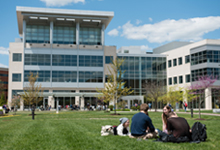
History & Social Sciences
This course explores American cultural history from World War II to today, focusing on postwar society, the 1960s, and major social movements including civil rights, LGBTQ rights, and women’s roles. Students will engage with films, documentaries, and readings, with class discussions centered on analysis, reflection, and personal perspectives. Instructor: Gerard Walsh.
Starting to explore your family history or need some new ideas to jump start your research? This course offers everything you need to know to start discovering your family’s story. Gathering information at home, and then expand your search to learn about the records that reveal your ancestors’ lives, and where to find them, both in repositories and online. Learn about the research process, keeping your discoveries organized and documented, while collaborating with fellow researchers, and expanding your genealogy expertise. Instructor: Jon Smith.
This course explores the 1758 British campaign to capture the Forks of the Ohio, focusing on George Washington’s role, shifting Native alliances, wilderness logistics, key battles, Maryland’s involvement, and the campaign’s lasting impact on the French and Indian War and the American Revolution. Instructor: Roger Swartz.
This course examines the 1758 British raid on Fort Frontenac, highlighting its strategic importance, planning, Native alli- ances, and impact on the broader war effort. We’ll explore key locations, the raid’s role in supporting Forbes’s campaign, and the later Revolutionary War roles of British participants. Instructor: Roger Swartz.
This course explores the experiences of Northeast Asian women during the Pacific War, focusing on their roles as refugees, soldiers, workers, artists, and survivors. Through personal accounts, we examine their resilience and contributions across China, Korea, Japan, and the diaspora, highlight- ing often-overlooked perspectives of World War II in East Asia. Instructor: Linda Kato.
Paul Cézanne, Edgar Degas, Claude Monet, Mary Cassatt, Pierre-Auguste Renoir, Vincent van Gogh, and Georges Seurat are some of the best-known and most beloved artists of all time. This class will explore all of these painters and more as we look at two nineteenth-century movements, Impressionism and Post-Impressionism, with which all of these artists are associated. Instructor: Kara LaRose.
Female artists have been involved in making art since time began, but many art forms dominated by women have been historically dismissed as craft instead of being considered fine art. This course will explore the contributions of female artists to art history, focusing on such women as Artemisia Gentileschi, Mary Cassatt, Rosa Bonheur, Georgia O’Keeffe, Kathy Köllwitz, Frida Kahlo, Barbara Hepworth, and Louise Bourgeois.



